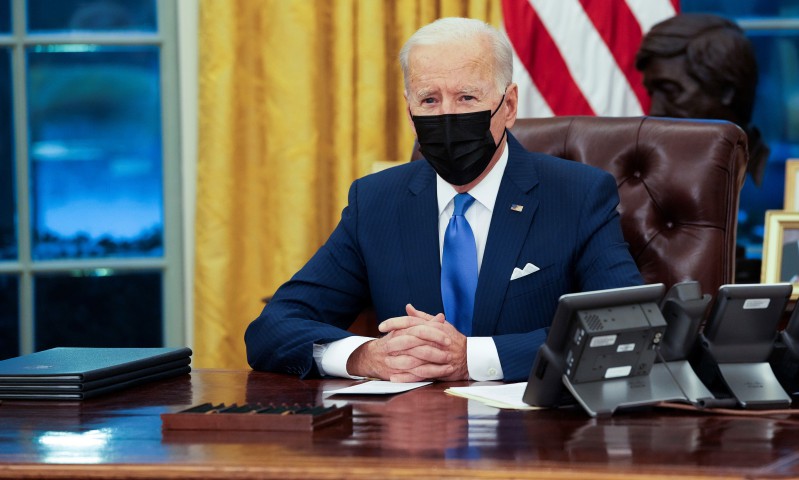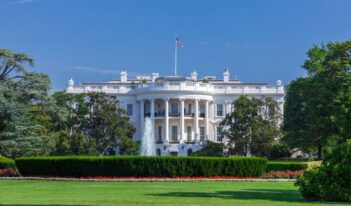
President Biden’s first executive actions provide lessons on presidential authority and ambition.
Editor’s Note: This essay is the second part of a two-part feature on President Biden’s early “executive actions” and presidential authority.
* * *
President Joe Biden’s first week of “executive actions,” viewed in tandem with President Donald J. Trump’s final burst of such activities, gives important clues as to the powers and frustrations of the contemporary presidency. In an essay of mine published yesterday in The Regulatory Review, I explained what those actions showed about the reach and durability—or lack of reach and durability —of executive action. This essay reviews three more lessons to be learned—including the wisdom of not overemphasizing the volume of formal executive actions as a measure of executive ambition.
Technical complexity can obscure Presidents’ consequential actions about regulatory policy. Outside of Washington, D.C., the executive actions that attract the most headlines are those that plainly signal an incumbent President’s highest priorities and most important substantive values, especially if those priorities and values are controversial. It is hardly surprising, therefore, when public attention is paid to presidential actions affecting climate policy, immigration, public health, and race and gender equity.
For the last forty years, however, some of the most important executive orders have been those shaping the process by which administrative agencies regulate in the public interest.
In a nutshell, President Ronald Reagan used an executive order to revolutionize the relationship of the White House to the bureaucracy. He directed the Office of Information and Regulatory Affairs (OIRA) within the Office of Management and Budget (OMB) to oversee an elaborate process of cost-benefit analysis that was intended to be a prerequisite to the overwhelming bulk of major federal regulation going forward. That system, calling for OIRA clearance of agency cost-benefit analyses before issuing significant public-binding rules, has now been in place under Presidents of both major parties.
President Bill Clinton—who was less hostile to regulation than President Reagan—amended the process with the avowed aims of increasing its efficiency and transparency.
From the start to the finish of his Administration, President Trump issued executive orders intended to stymie the regulatory process and subject the bureaucracy to tighter presidential control. Executive Order 13,771, issued ten days into the Trump Administration, purported to add two requirements beyond cost-benefit analysis as speed bumps to the issuance of new rules.
One of these new requirements was a “cut-go” or “one-in-two-out” requirement which directed agencies to identify two existing rules that could appropriately be rescinded as an offset for each new rule. The other requirement empowered OIRA to impose on non-independent executive agencies a so-called regulatory budget that would determine the aggregate economic cost that each agency could impose on the national economy in a single year. It is far from clear that either requirement had the kind of deregulatory impact intended, but the signaling was clear: President Trump wanted less regulation.
To help steer the bureaucracy in his intended direction, President Trump also ordered significant changes in agency management. Most notably, Executive Order 13,957, issued roughly two weeks before Election Day 2020, ordered the creation of a so-called Schedule F for federal employees. Schedule F was to comprise “career positions in the Federal service of a confidential, policy-determining, policy-making, or policy-advocating character,” all of which would become part of the “excepted service.” The political appointees atop each agency would then have fewer limitations on the selection of officials to fill those positions, and those holding Schedule F positions would enjoy fewer protections against demotion or discharge.
If issuing this order just before the election was a sign of President Trump’s optimism, it is yet more remarkable that, in the last week of his term, he issued two more executive orders on regulatory process. One of these—an order issued two days before the end of his term—was specifically intended to tighten the control of political officials over agencies’ regulatory process. It would have permitted only an agency’s senior political officials to initiate the development of, or to sign off on, new final rules.
With the proverbial stroke of a pen, President Biden eliminated the one-in-two-out and regulatory budget requirements on Inauguration Day. The same instrument revoked five other Trump executive orders also intended to make regulation more difficult, to tighten political control over the bureaucracy, or both.
But potentially the most notable action President Biden took on the administrative process was an Inauguration Day presidential memorandum titled, “Modernizing Regulatory Review.” Unlike the Reagan regulatory review executive order, which was plainly skeptical of regulation, and unlike the more evenhanded but still cautionary Clinton version, President Biden in his memorandum set out a strikingly positive philosophy concerning both public interest regulation and the role of the White House in advancing it.
In his memorandum, President Biden called for OMB to initiate a process “for improving and modernizing regulatory review,” including “concrete suggestions on how the regulatory review process can promote public health and safety, economic growth, social welfare, racial justice, environmental stewardship, human dignity, equity, and the interests of future generations.”
Rather than casting the role of the White House as merely checking regulatory excess, the memorandum seeks “proposals that would ensure that regulatory review serves as a tool to affirmatively promote regulations that advance these values.”
President Biden’s pro-regulatory stance is conspicuous in three other provisions. In one, he calls for improvements to the regulatory review process that “fully accounts for regulatory benefits that are difficult or impossible to quantify, and does not have harmful anti-regulatory or deregulatory effects.”
In the second, President Biden seeks procedures “that take into account the distributional consequences of regulation…to ensure that regulatory initiatives appropriately benefit and do not inappropriately burden disadvantaged, vulnerable, or marginalized communities.”
In the third, he asks OMB to “consider ways that OIRA can play a more proactive role in partnering with agencies to explore, promote, and undertake regulatory initiatives that are likely to yield significant benefits.” These are goals that could have enormous substantive impacts, even as the memorandum also invokes traditional good-government values of “efficiency, transparency, and inclusiveness.”
Whether these changes to the review process will yield dramatically different outcomes or dramatically shift regulatory approaches remains to be seen.
On January 30, 2009, a newly inaugurated President Barack Obama issued a memorandum directing the Director of OMB “to produce within 100 days a set of recommendations for a new Executive Order on Federal regulatory review” to replace the Clinton order. He heightened expectations by appointing as the head of OIRA Cass Sunstein, the most prolific contemporary U.S. administrative law scholar.
But no new order emerged in 100 days, nor even a year or eighteen months. Instead, just two days short of his second anniversary in office, President Obama issued Executive Order 13,563, intended to “reaffirm” and supplement “the principles, structures, and definitions governing contemporary regulatory review that were established in” the Clinton order. The Obama order did not modify the regulatory review process significantly.
President Biden’s appointment of Sharon Block to a senior OIRA position holds out a promise of unprecedented progressive outlook in OMB leadership. OMB’s response to President Biden’s memorandum on regulatory review may produce a substantial reorientation of OMB’s relationship to the regulatory bureaucracy—just one that will not make many headlines.
Preparation pays off. Another lesson of President Biden’s first week is the most obvious: preparation pays off. President Biden’s roster of executive actions is impressive not just in its volume, but also in its attention to detail and craft in drafting. This rollout could not have been accomplished without intense effort by the lawyers and policy professionals engaged in President Biden’s transition efforts.
President Biden’s first-week performance stands in marked contrast to the opening rounds of the Trump Administration. For example, President Trump’s travel ban order, issued a week into his term, had to be redrafted twice before taking a form that the U.S. Supreme Court ultimately approved.
The Trump Administration’s corner-cutting approach to administrative process persisted throughout President Trump’s term, leading to an unprecedented loss rate for the federal government in court. One study of 194 lawsuits challenging Trump administrative initiatives found that the Trump Administration won only 31 lawsuits without having to withdraw the challenged action. Two Washington Post reporters summarized the Trump Administration’s court challenges this way: “In case after case, judges have rebuked Trump officials for failing to follow the most basic rules of governance for shifting policy, including providing legitimate explanations supported by facts and, where required, public input.”
This lesson, however, will continue to have significant implications for the pace of President Biden’s initiatives going forward. It will take time and care to insulate important administrative actions from judicial reversal when they are likely to be challenged before a federal judiciary which is more conservative than it was even four years ago.
Michael Regan, President Biden’s new Administrator of the U.S. Environmental Protection Agency has signaled an understanding of this reality, telling the U.S. Senate Committee on Environment and Public Works that the Biden Administration would not try to reinstate the Obama Clean Power Plan but work on a new plan to reduce carbon dioxide emissions from power plants. The obvious goal is to take the time needed to create a plan that will endure, rather than plunge ahead at a more aggressive, but legally less promising, pace.
Form is fluid and counting “actions” can be misleading. The final lesson lies with the difficulties involved in assessing either the ambition or impact of an Administration by counting formal documents. For one thing, there is no legally authoritative definition for “executive action,” which has entered the language of Washington, D.C. largely as a way for Presidents to claim political ownership of a policy initiative legally authorized anywhere in the executive branch. The label is often unhelpful to the public because it obscures the role of the administrative agency or agencies actually responsible for implementing the President’s goals.
Furthermore, the formats that Presidents choose for executive actions are largely arbitrary. Observers noted, for example, that President Obama appeared to be less aggressive than other Presidents in issuing executive orders. But that appearance was deceiving because President Obama frequently issued presidential memoranda that could just as easily have been executive orders.
Similarly, it is hard to discern any bright line between President Biden’s executive orders and memoranda. Beyond his executive orders and memoranda, President Biden used a set of “proclamations.” One, entitled, “Ending Discriminatory Bans on Entry to the United States,” revoked three Trump proclamations and one Trump executive order on immigration.
What seemingly dictates the use of the proclamation format—except for those proclamations that are simply declarations of presidential sentiment—is that the wording of a statute authorizes the President to “proclaim” whatever the proclamation is announcing. Many proclamations, however, are also indistinguishable from executive orders.
Also, it is impossible for outside observers to count the number of classified presidential orders or memoranda. President Biden could have issued an important set of first-week presidential directives on foreign and national security policy that are simply not public. The Trump Administration called such documents National Security Policy Memoranda, although earlier administrations have called them Presidential Policy Directives or Presidential Study Directives.
And most important, the presidential initiatives captured in formal documents represent but a fraction of the informal communications that direct or otherwise motivate the initiatives of other executive branch actors. The events of January 6, 2021, for example, provide dramatic evidence that the full measure of President Trump’s ambition or the impact of his statements cannot be assessed fully by counting pages of presidential prose.
President Biden has set forth a progressive policy agenda more reminiscent of Presidents Franklin D. Roosevelt or Lyndon B. Johnson than President Obama. His first week’s output amply demonstrated the scope of his ambitions. By their terms, however, President Biden’s actions broke no obvious new ground in the nature or form of presidential authority being asserted. Whether President Biden will remain reliably consistent with earlier presidential norms or exercise more ambitious executive power than those of his pre-Trump predecessors will make for careful study over the next four years.
Part one of this feature appears as “Lessons in Presidential Authority.”




